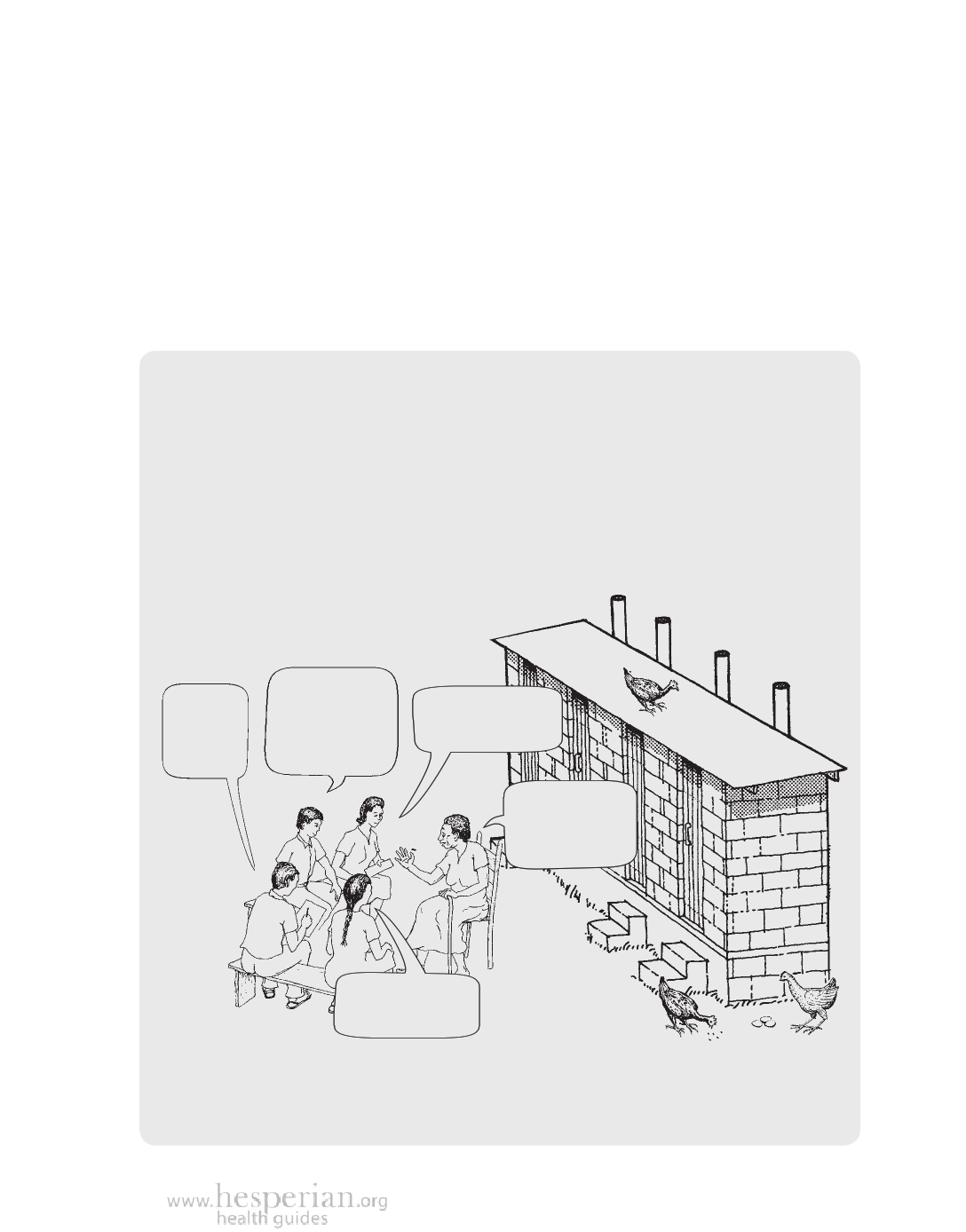
Planning for Toilets 107
Sanitation decisions are community decisions
When decisions about toilets are made by the people who will use them, it is
more likely that people’s different sanitation needs will be met. And because
household, neighborhood, and village sanitation decisions can affect people
downstream, when neighboring communities work together, health can improve
for everyone.
Community participation can make the difference between success and
failure when a government or outside agency tries to improve sanitation.
The wrong toilets?
In 1992, the government of El Salvador spent over US $10 million to build
thousands of toilets. These toilets were meant to turn waste into fertilizer, but
they needed more care and cleaning than the old toilets people were used to.
The government did not involve anyone in the communities to help build them,
and there was no training in how to use them. So people did not learn how
they worked.
After the project was finished, the government studied how the toilets were
being used. They learned that many of the
toilets were not being used well,
and others were not used at all.
These
toilets
don’t
work!
The toilets
work, but we
don’t use them
the way we’re
supposed to.
The government
never asked if we
wanted them.
Building a few
toilets to try
out first would
have helped.
Somebody got
paid off for
this mess!
When people participate in planning, the result is more likely to fit their needs.
A Community Guide to Environmental Health 2012